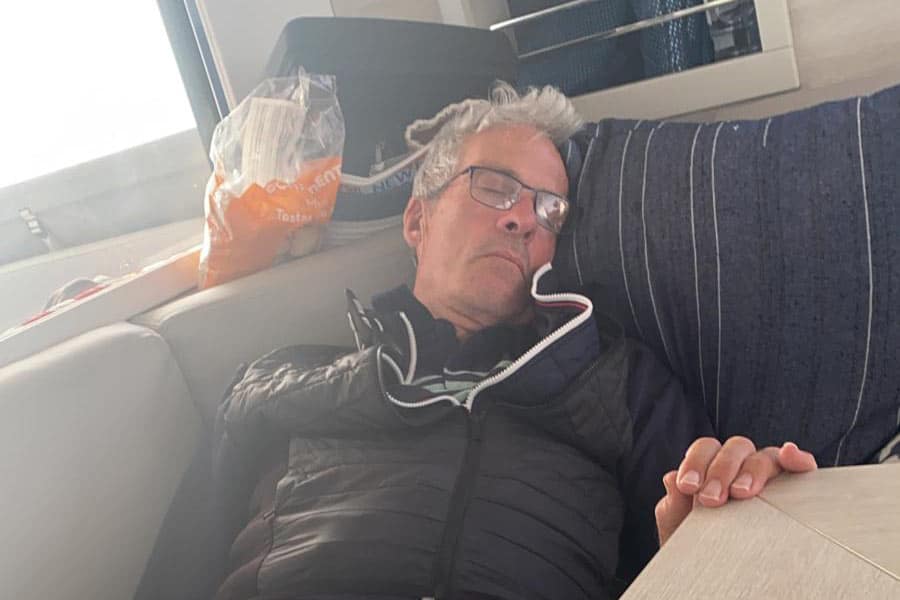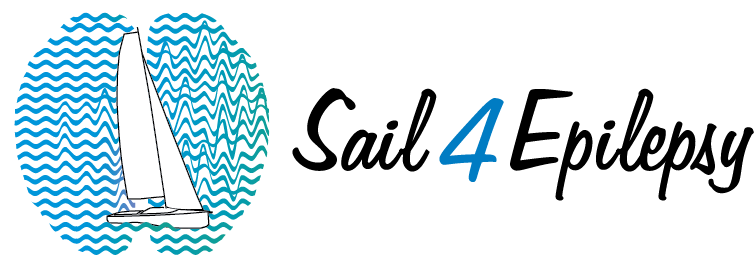
When Phil sails either solo or double-handed offshore it is necessary to balance the need for sleep with safely arriving at his destination. He must keep a lookout for other vessels as well as control the sailboat, keep himself fed and hydrated, and perform any necessary maintenance. This causes a significant deficit in the total amount of time that he can sleep and leads him to rely on short naps of 10-20 minutes in duration. One of his challenges is to know when sleep must be the priority. He would like an objective guide that tells him “it’s nap time.”
During our transatlantic sailing adventure last year we performed a sleep study. We wanted to develop a better understanding of the constraints on vigilance due to sleep deprivation while sailing, with the goal of developing a feedback system that would inform Phil about his level of fatigue.
We soon learned that planning and performing such a study on land is very different than when at sea. On land, the person running the study gets normal sleep. At sea, they were part of the crew and got sleep deprived. For example, some sail changes required all hands on deck, so everyone was woken to help out. Our own sleep debt dramatically impacted our ability to perform the study.
We used 3 methods to collect data during the study: recording brainwaves while sleeping, testing our vigilance while awake, and recording subjective information. For the first, we used the Electroencephalogram (EEG), which is the gold standard for measuring the electrical behavior of the brain and for gaining insight into sleep deficit. We worked with some companies to identify inexpensive devices that could easily be worn while at sea and decided on a Brainbit headband. This device uses 4 dry electrodes and two sensors to monitor electrical activity produced by cortical regions of the brain.


However, this method only gets a measure of sleep debt when you go to sleep: this assessment is based on the “amplitude” of brain waves during a type of sleep termed non-REM sleep. The EEG does not provide information while the subject is awake to alert them that they are getting too sleep deprived. Our overall goal was to ask whether a test can be performed while awake that might give the sailor feedback about when to take a nap. We therefore paired the sleep EEG with a simple test – a psychomotor vigilance task – that is performed while awake with the intent of cross correlating the awake data with the sleep EEG data. Finally, we also used a diary to record our subjective impressions of how we were feeling – drowsy, alert etc.

We successfully obtained data from all measurements but were not able to make any real conclusions because of data collection problems. The study was comical at times, mostly because we were tired. We collected EEG data but the quality using dry electrodes was too poor to allow quantitative assessments to be made. Also, as the journey progressed, prioritizing someone to wear the EEG became a low priority because getting straight to sleep was more important.

In the psychomotor vigilance task, one determines average reaction time to a light flash on your mobile screen over 30 trials. We had practiced this on land and it can work well, but on many occasions while sailing 30 trials were too many and one started to fall to sleep before completing the task. Or forgot to do the test at the end of watch, instead choosing to immediately go to sleep!
The diaries were successfully filled in but did not offer much useful insight. In fact, at least one person woke after a 3 hour nap with the pen still in their hand and the diary entries incomplete.
The non-sailor may ask, why were we so tired? Sailing across the Atlantic Ocean requires the crew to sail the boat continuously for over three weeks without the opportunity to stop and allow all crew to take a long rest. At times the seabed was 18,000 feet beneath us and anchoring was not an option. We had a watch schedule in which two people were on watch at all times, while three others were off watch and able to attend to boat jobs: cleaning, inspection for wear and tear, cooking, washing and finally, sleeping. The longest off-watch period was 6 hours, and we never obtained more than a four hour period of continuous sleep. Therefore, we quickly became sleep deprived.
We did learn several things from this preliminary study that could be used in a future study: we need a simple app that allows a diary to be filled in quickly and easily and the psychomotor vigilance task should have fewer trials. But perhaps most importantly, for Phil’s next offshore sail to Bermuda, he will use the psychomotor tasks, not as a quantitative assay but instead to inform him subjectively that he is sleepy. All on board knew that there came times where completing the task was difficult. When you get to this point its key to get some sleep.

